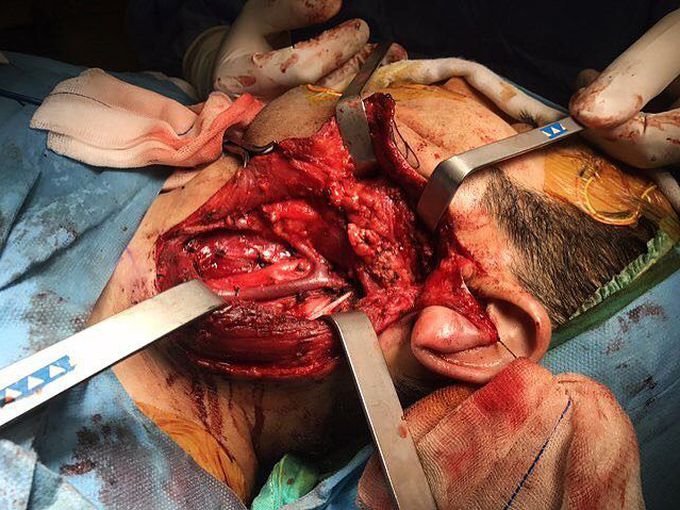


Parotidectomy and neck dissection to explore and resect a benign parotid gland tumor!
The parotid gland is one of our 3 salivary glands (the others being submandibular and sublingual). Most of the salivary gland tumors occur in the parotid and are benign. The most common type is a pleomorphic adenoma (mixed tumor). Malignant transformation is possible, resulting in carcinoma ex pleomorphic adenoma, but this usually occurs only after the benign tumor has been present for 15 to 20 years. If malignant transformation occurs, the cure rates are very low, despite adequate surgery and adjuvant therapy.Other benign tumors include monomorphic adenoma, oncocytoma, and papillary cystadenoma. These tumors rarely recur and rarely become malignant.The photograph shows the jugular vein at the center, the acoustic nerve below, and the facial nerve to the right. The facial nerve normally courses and divides within the core of the parotid gland. Any surgical procedure involving the parotid gland (parotidectomy for a benign tumor) requires precise identification and preservation of the facial nerve fibers.This nerve not only carries nerve impulses to the muscles of the face, but also to the tear glands, to the saliva glands, and to the muscle of the stirrup bone in the middle ear (the stapes). It also transmits taste from the front of the tongue. Since the function of the facial nerve is so complex, many symptoms may occur when the fibers of the facial nerve are disrupted.Photo credit @mhmtschahtuer

